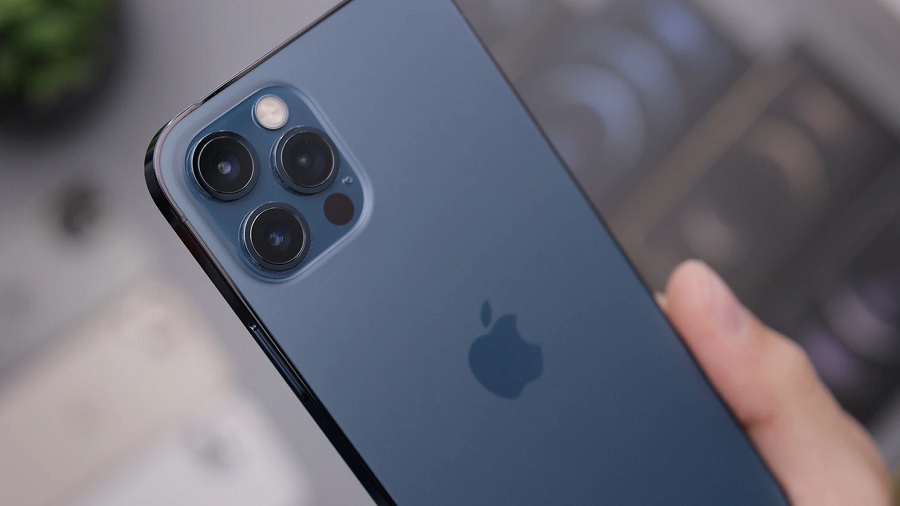Apple has reportedly made the necessary arrangements to start production of the A15 chipset in late May. Since the next-generation processor is the anticipated processor to power, the iPhone 13 series, this supply chain tip indicates something important about Apple’s next smartphone series.
iPhone 13 specs: Next-generation Bionic processor enters mass production soon
The specifics of the A15 chip’s performance and computing capabilities are still unknown. But Apple has been updating its own SoC series every year for the annual refresh of the iPhone line, so the tech giant is expected to do the same for 2021.
DigiTimes reported (via MacRumors) that Apple has already secured TSMC’s 4nm production capacity for the “new-generation Mac series” as well as the manufacturer's N5P process node for the production of the A15 chip. The latter is expected to kick off in late May, which corresponds with Apple’s usual production schedule in time to release the iPhone 13 in the fall.
Several reports have claimed that 2021 is going to be an “S” year for Apple, so no game-changing upgrades are expected on the iPhone 13 series. However, the core of how it would perform better than its predecessors will largely depend on the architecture of the A15 chip.
Some of the widely reported features to be introduced in the iPhone 13 series are mostly functions that have been rumored over the last couple of years. The Pro models are expected to finally ship with a 120Hz display. The screen is also rumored to get minimal design change with the highly requested smaller notch.
Another series-wide upgrade many are hoping to happen is the return of Touch ID in the iPhone 13 series. Many Apple fans realized they miss the fingerprint-based authentication system since wearing face masks became part of people’s lives for a year now.
iPhone 13 release date: Will it be affected by the ongoing electronic parts shortage?
The same report from DigiTimes does not seem to be sounding the alarm for Apple and the iPhone 13 series and how they could be affected by the ongoing electronic parts shortage. However, Apple’s known manufacturing partner, Foxconn, has recently stated that it is already starting to feel the effects of the parts shortage in March.
Although it is unclear if the problem would affect Apple down the line, iPhone fans might not want to rule out a delay just yet. But if everything else goes as planned, the iPhone 13 could be released as early as September.
Featured photo by Daniel Romero on Unsplash



 China Proposes Stricter Rules for AI Services Offering Emotional Interaction
China Proposes Stricter Rules for AI Services Offering Emotional Interaction  FTC Praises Instacart for Ending AI Pricing Tests After $60M Settlement
FTC Praises Instacart for Ending AI Pricing Tests After $60M Settlement  Texas App Store Age Verification Law Blocked by Federal Judge in First Amendment Ruling
Texas App Store Age Verification Law Blocked by Federal Judge in First Amendment Ruling  Jared Isaacman Confirmed as NASA Administrator, Becomes 15th Leader of U.S. Space Agency
Jared Isaacman Confirmed as NASA Administrator, Becomes 15th Leader of U.S. Space Agency  Republicans Raise National Security Concerns Over Intel’s Testing of China-Linked Chipmaking Tools
Republicans Raise National Security Concerns Over Intel’s Testing of China-Linked Chipmaking Tools  China’s LandSpace Takes Aim at SpaceX With Reusable Rocket Ambitions
China’s LandSpace Takes Aim at SpaceX With Reusable Rocket Ambitions  MetaX IPO Soars as China’s AI Chip Stocks Ignite Investor Frenzy
MetaX IPO Soars as China’s AI Chip Stocks Ignite Investor Frenzy  ByteDance Plans Massive AI Investment in 2026 to Close Gap With U.S. Tech Giants
ByteDance Plans Massive AI Investment in 2026 to Close Gap With U.S. Tech Giants  Dina Powell McCormick Resigns From Meta Board After Eight Months, May Take Advisory Role
Dina Powell McCormick Resigns From Meta Board After Eight Months, May Take Advisory Role  Trump Administration Reviews Nvidia H200 Chip Sales to China, Marking Major Shift in U.S. AI Export Policy
Trump Administration Reviews Nvidia H200 Chip Sales to China, Marking Major Shift in U.S. AI Export Policy  Apple Opens iPhone to Alternative App Stores in Japan Under New Competition Law
Apple Opens iPhone to Alternative App Stores in Japan Under New Competition Law  Nvidia Weighs Expanding H200 AI Chip Production as China Demand Surges
Nvidia Weighs Expanding H200 AI Chip Production as China Demand Surges  Nvidia to Acquire Groq in $20 Billion Deal to Boost AI Chip Dominance
Nvidia to Acquire Groq in $20 Billion Deal to Boost AI Chip Dominance  Italy Fines Apple €98.6 Million Over App Store Dominance
Italy Fines Apple €98.6 Million Over App Store Dominance  Biren Technology Targets Hong Kong IPO to Raise $300 Million Amid China’s AI Chip Push
Biren Technology Targets Hong Kong IPO to Raise $300 Million Amid China’s AI Chip Push  Moore Threads Unveils New GPUs, Fuels Optimism Around China’s AI Chip Ambitions
Moore Threads Unveils New GPUs, Fuels Optimism Around China’s AI Chip Ambitions 





























